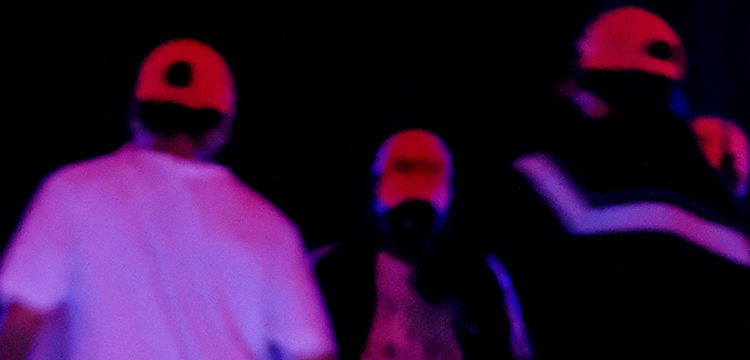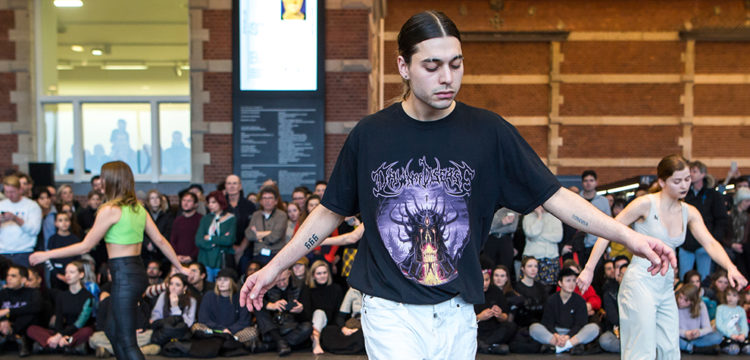Knowledges in Motion
A conversation with Susanne Franco on dance, archives and museums
Dance and performance are increasingly present in museums and art galleries, and curators are focusing on their potential for the active involvement of new and diverse visitors. Dance and performance are also proving to be valuable tools to give them a direct experience of contemporary art. Finally, the presence of dance and performance in museums has called into question their presumed ephemeral and immaterial nature, revealing how the body itself can be understood as a form of archive, and the incorporation of a dance piece or a performance a process of preservation. These concepts have become central to the artists’ research as much as for scholars. Renowned choreographers, dancers, theorists, and pedagogues are currently exploring also the unique potential of dance and performance in establishing a dialogue between art and science. Susanne Franco is one of them.
In the context of The Mind is a Muscle. Dance and Performing Arts, a public program curated by Riccardo Venturi for ICA Milano, Susanne Franco’s intervention focused on new ways of participation and shared authorship that are generated in the museum, thanks to the inclusion of dance and performance in cultural programming. As museums are increasingly perceived as social platforms and permanent laboratories, Susanne Franco analyzed the new approaches and tendencies of museums and curatorial strategies based on language and participation, rethinking the parameters governing the relationship between performers and visitors, spaces and times, production and fruition.
Ginevra Bria: When and why does our mind turn into a muscle?
Susanne Franco: The Mind Is a Muscle, Part I is the title under which Yvonne Rainer presented her dance piece later known as Trio A in 1966 at Judson Memorial Church, New York. Although it was composed as a solo, on this occasion it was performed simultaneously—yet not in unison—by Rainer, Steve Paxton, and David Gordon. It consists in an un-modulated flow of everyday (pedestrian) movements, such as toe-tapping, walking, and kneeling, lasting for about 5 minutes. The sequence of movements, which was strictly planned, should be executed without phrasal segmentation and without any climax nor choreographic predictability. Despite the fact that the New York Times critic Clive Barnes reported in 1966 that it was “total nothingness”, Trio A is now considered a signature piece of the time and has stimulated an incredibly rich debate about what dance is or could be. The Mind Is a Muscle staged a revolutionary idea at that time: meaning could be generated collectively (and no longer only through individual expression), and could be visible at the surface level (and no longer just digging deep). For me it is still a perfect expression of dance and performance art as “simply” intelligent human activities.
How could participation represent an immaterial bridge between contemporary dance and institutions?
There are many ways in which participation can stimulate a different relationship between contemporary dance and institutions. The Italian choreographer Virgilio Sieni has a long experience in involving common citizens in his productions, starting with the Accademia sull’arte del gesto, founded in 2007, and part of the Centro Nazionale di Produzione in Florence. Here, from the beginning, Sieni aimed at establishing inclusive programs, for both professional dancers and amateurs of different ages, in which the participants are invited to experience the body and choreographic approaches to movement. He created numerous performances with different groups of people that were presented in unconventional places such as urban streets, abandoned buildings, or museums. Once appointed director of the Dance Biennale (2013-2016), he brought this experience in an institution, the Biennale, which was slowly exploring new ways of intertwining programs in various sectors (Art, Architecture, and Theater in particular).
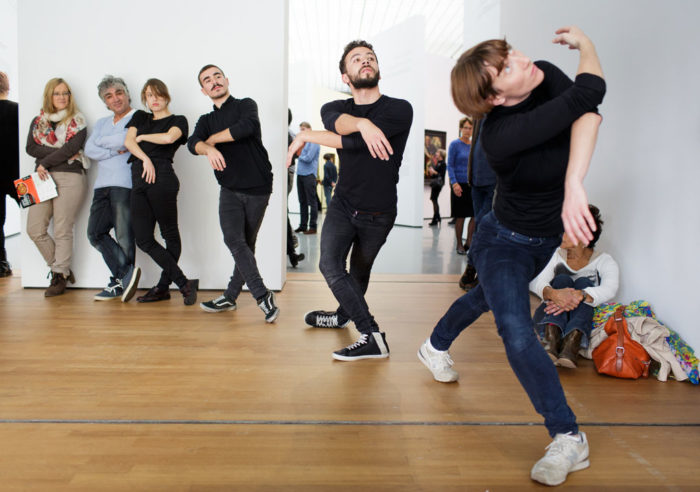
Dancing Museums, Rotterdam residence, © Fred Ernst
And what about the Dance Biennale?
The Dance Biennale, for its part, was trying to expand its audience and make contemporary dance something meaningful also for the non-expert. Alongside the programming of shows by internationally acclaimed artists, Sieni invested on citizens through a series of projects for ordinary people who wanted to experience this language and put themselves at stake. In a series of workshops, different generations could safely dialogue and gain confidence in their bodies and in their possibility to convey emotions. The performances and events that followed some of these educational programs were the results of shared experiences, and a social cohesion experimented through dance. One of the most memorable outcomes of this approach to dance and its relationships with both institutions and citizenship, was the site-specific performance Appunti del Vangelo secondo Matteo (Notes on the Gospel According to Matthew) presented at the Arsenale at the opening of the 14th International Architecture Exhibition, directed by Rem Koolhas, in 2014. The performance inherited the structure of Medieval mystery plays and the iconographic legacy of Renaissance paintings, mixing the most sacred atmosphere with the deep humanity of the stories told only with gestures and movements. The 27 “choreographic tableaux” (including Scourging and Crucifixion), divided into three cycles of nine, over a total of twelve hours of performance were elaborated by Virgilio Sieni and his assistants in six Italian regions, involved 200 performers, dancers, and ordinary people (among whom children and the elderly). Visitors/spectators could move around the space and stand in front of each tableau as much as they liked, composing each his/her visual and emotional dramaturgy. The powerful transformative effect of the performance was visible in the reactions of the audience, who left the space profoundly touched.
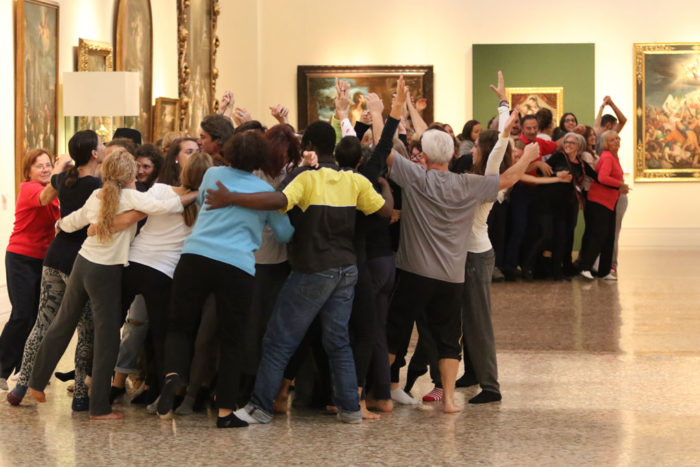
Dance Well, photo by Roberto Cinconze.
Could you please mention another project?
Another project that I would mention as a positive example of how it is possible to build a bridge between contemporary dance and institutions is Dance Well. Started in 2013 in Bassano del Grappa, with the support of the Centro per la Scena Contemporanea (CSC), Dance Well consists in a series of workshops for people living with Parkinson’s disease, their families, and all members of the community who may be interested in dance. The purpose of Dance Well is artistic, not therapeutic, and for this reason, the classes, given for free, take place in The Museum of Bassano. The immersion in an artistic context does amplify the impact of the dance practice because it offers a significant source of inspiration and imagination. Here, Parkinson’s Dancers (as they name themselves) feel their moving body again as a source of pleasure and as a tool to produce and feel beauty. Dance Well teachers do not follow a specific method, they rather share a series of principles and objectives, and each of them proposes a different approach, using choreographic techniques and dance training according to their skills and background. Dance Well is also connected with the artists in residence at the CSC, a member of the European Dancehouse Network, and partner of the European network Aerowaves. Each of these institutions/networks is, in its turn, involved in many European Projects sustained by Creative Europe and Erasmus+ such as The Migrant Body and Building Strategies for Communication in Contemporary Dance. Many of the artists who arrive to Bassano from all around through these networks and projects, join Dance Well as guest teachers during their residencies.
The classes are also part of a program that involves students of the local secondary schools and their participation expands the dialogue between generations. In recent years some asylum seekers based in Bassano joined the group and shared their dance backgrounds with the Parkinson dancers, and altogether these presences are contributing to transform the group of Parkinson’s dancers in a model of an inclusive community.
The training of these dancers is not distinct from their participation in real shows, commissioned to internationally renowned choreographers and included in the official programming of the contemporary dance festival BMotion Festival, also based in Bassano. The dance piece Oro. L’arte di resistere (2018) is the first presented in a theater program outside Bassano and Francesca Foscarini has been awarded for this piece as the best emergent choreographer of the year in Italy. At the moment, Dance Well has registered more than thirteen thousand participants and the project has become a process of individual and social empowerment that other cities are trying to replicate in Italy and abroad.
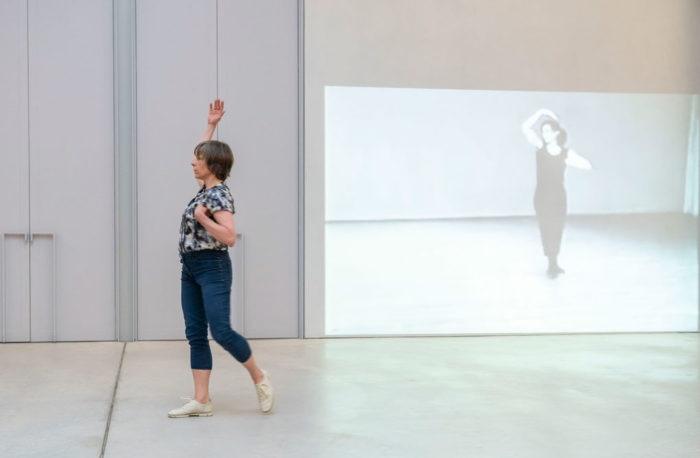
Sara Wookey in Transmitting Yvonne Rainers’s Trio A (1966), Teatrino di Palazzo Grassi (2019).
How can contemporary dance be archived and what is considered a document for dance? And how digital technologies could support these mnemonic processes?
For a long time, dance has been perceived as an ephemeral art and, and therefore, not suitable to be archived according to a traditional vision of the archive. Bodies and memory were not considered sufficient to preserve it. This idea of documentation is related to a specific concept of (material) performance remain, and to the model of history based on the idea that objects and documents survive longer than living bodies, human memory, and physical practices. From this perspective, the question of the document is mainly a question of time and duration because it is supposed to assure the most stable and durational connection with the past. Many public and private archives such as the Centre National de la Dance and its Mediathèque or the National Resource Centre for Dance at the University of Surrey, to name just two of them, collect material remains of contemporary dance pieces. These places are still of great interest, and their role is not in question. Some museums historically involved in the production and exhibition of performances (the MoMA or The Tate Modern), have also acquired archiving material (or performance remains) of past performances. This is an encouraging sign of the attention given at institutional level to the preservation of dance. Last but not least, digitalization is contributing to expanding the notion of archival practices and is offering fantastic tools and possibilities to preserve dance.
A remarkable example of how it is possible to combine archival and transmission processes is Motion Bank, the data collection project lead in Frankfurt by William Forsythe and his dance company. It was established to create an open-source repository of dance, a “library of movement” made of online scores using software tools, capture movement technology, and choreographic coding labs. After having captured dancers’ movements with video cameras and Microsoft Kinnect, and analyzed the data, the team (made of choreographers, scholars, computer scientists, and web designers) visualized through animation the core ideas of each selected choreography. To process (or translate) the choreography into innovative digital forms makes it easier to understand and describe it without using language. At the same time, it helps to preserve both dance and choreography in a very dynamic way. So, on a more general level, we can certainly say that digitalization, as a permanent transfer where storage across temporal distance, is also changing the way we can conceive a dance legacy.
How to retrace the past of the dance?
We recently started imagining different options to retrace the past of the dance and to preserve its present for the future, following the idea that the body is a document and choreographed movements are archival processes. In this frame, contemporary dancers and choreographers have different options to transmit their repertoires and are exploring other strategies to preserve their works and legacies.
A good example to summarize these major changes in theorizing/practicing dance archives is the case of Trio A that has undergone numerous re-performances and transformations. For a long time, Rainer has created several different versions of it, as a solo, as a trio or for large groups to explore all possible dimensions of its structure. She has transmitted Trio A to several generations of professional dancers and amateurs, and basically to anyone who wanted to learn it, loving the idea of how transformation became a central feature of the piece. Some of the original dancers have also performed it alone in different occasions changing the length and other elements. Rainer performed it for the camera in 1978, and the video is now available on youtube, despite the fact that she does consider this version inaccurate and unsatisfactory. More recently she has trained a few certified transmitters of this and other works, legitimated in spreading them though workshops and lecture/performances. Last year, at Palazzo Grassi, we hosted a workshop with Sara Wookey, transmitting it to a group of dancers along with inspiring discussions about all these issues. Rainer also recorded Trio A in Labanotation, one of the most diffused dance notation system, realizing the great possibilities of this tool (that can assure to a choreography a stable documental status) but also its limitations (due to the impossibility of fixing on paper the complexity of human movements and their physiological and emotional fabric).
After all these attempts to keep Trio A alive, from the open access model to the more recent restrictions imposed through certificated teachers, Rainer has surprisingly affirmed that her generations did not invest enough in documentation. The result, she says, is that much of their production has disappeared. On the contrary, we can reply that today scholars and artists consider Trio A an historical piece whose contemporary dimension is not less important than the presupposed “original” and “authentic” version. In other words, it is a dance piece stored in different bodies and will reappear and disappear sometime and somewhere as a form of living archive through its almost uncountable re-performances, or as an “editioned artwork”, as suggested by Catherine Wood. This is what happens with the dance and in dance, where every legacy is a work-in-progress, independently from the will of his/her author. Embodied memories (of both dancers and spectators), are not subject to copyright laws or archival protocols of heritage policies. They rather follow unpredictable tracks to emerge in places and times where we don’t always expect to find them. We need to refine our tools to retrace them and to expand our notions of history, document, and archives taking advantage of what dance is teaching to us. This is precisely the goal of Memory in Motion. Re-Membering Dance History (2019-2021), the international research project I’m currently directing at Ca’ Foscari.
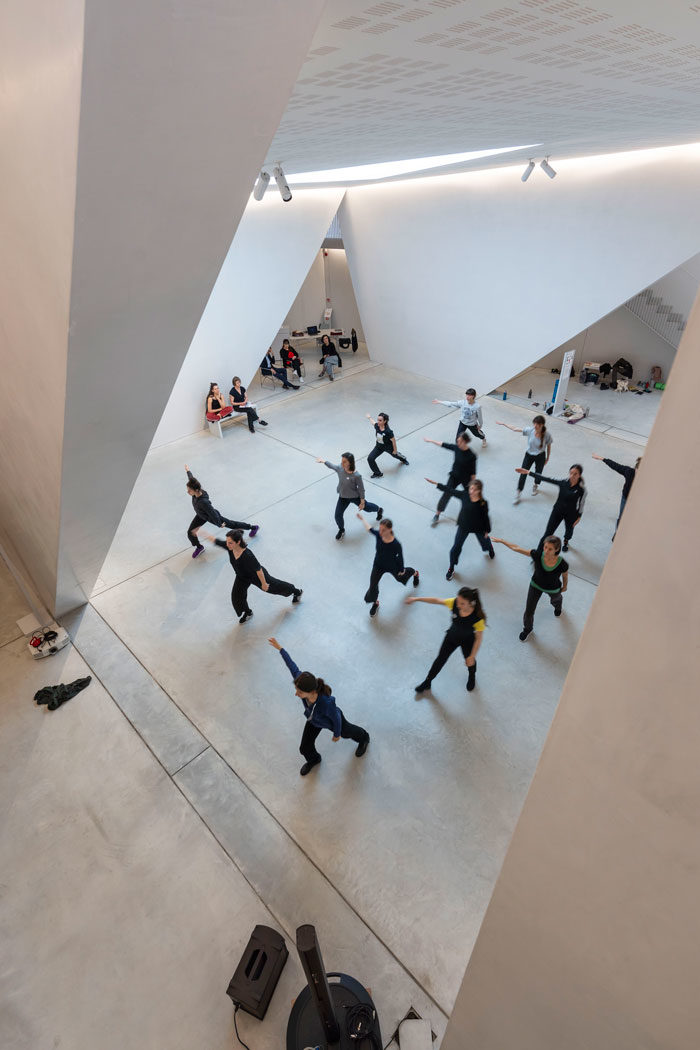
Sara Wookey, Transmitting Yvonne Rainers’s Trio A (1966), masterclass at Teatrino di Palazzo Grassi (2019).
Could an archive be a performative project itself?
For many contemporary artists archiving, transmitting, and performing are not separate processes: the performance is both the archive and the archival process. Reenactment is the most widespread way to engage in the past of the dance, to challenge the supposed temporal linearity of dance history, and to highlight the dancing body as a living archive. In his lecture-performance, for instance, Urheben Aufheben (2008), the German dancer and choreographer Martin Nachbar stages the story of his discovery of and fascination with the series of solos created in 1962 to 1964 by the German modern dancer Dore Hoyer. Nachbar, trained in very different dance techniques, started with copying Hoyer’s movements as they appear in the video recording of these solos. Later on, he combined this visual approach with a more direct embodied experience of this dance technique with the help of Hoyer’s former assistant. In Urheben Aufheben he re-actualizes these solos, and by combining on stage his own bodily memories with his theoretical reflections, he shares the entire process with the audience.
The idea of presenting the process of theorizing and discussing the possibility to archive a time-based work of art as a performance is also the starting point of the project commissioned in 2014 by Tate Modern to the artist Harold Offeh. Inspired by artist Vito Acconci’s correspondence with a curator outlining the details of his performances, Offeh discusses with students and scholars these ideas through a performance titled How do we document and archive performance? A live art salon. The piece is now available in the video recording archived version on the Tate’s website.
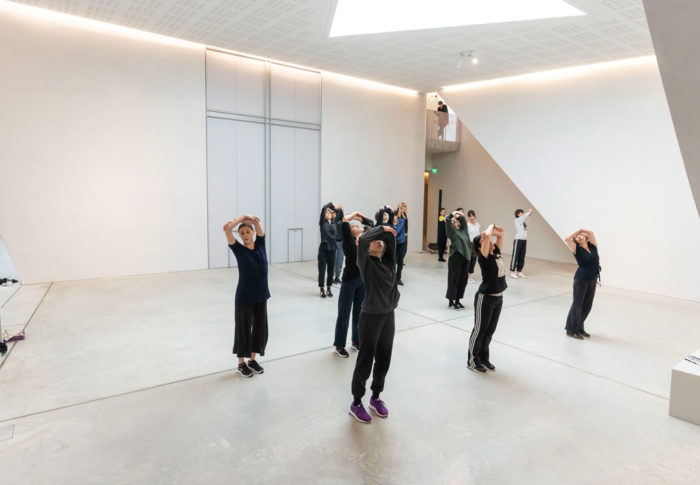
Sara Wookey, Transmitting Yvonne Rainers’s Trio A (1966), masterclass at Teatrino di Palazzo Grassi (2019).
Which recent exhibition has investigated the role of the spectator in relation to dance and how?
The role of the spectator was radically challenged in the 1960s and 1970s by postmodern dancers, and, more recently, has been put under pressure particularly by the generation of choreographers defined as conceptual. Today, the increasing presence of dance and performance art inside museum spaces is contributing to a radical change of the way institutions invest in attracting larger and more diverse audiences, and in stimulating their participation. The new hybrid types of performance called “dance exhibition”, “choreographic exhibition”, “choreographic installation” and so on, entail several adjustments in the audience behaviors from what they were used to inside theaters (black box) to what they can do inside exhibition spaces (white cube) now. A compelling case of this double investment (by artists and by institutions) was the two-day dance event hosted by Tate Modern in May 2015, If Tate Modern was Musée de la danse? It was commissioned by the chef curator to the French dancer and choreographer Boris Charmatz, appointed director in 2009 of the Centre Chorégraphique de Rennes et Bretagne, an institution that he immediately renamed Musée de la danse (Dancing Museum). He also wrote the Manifesto for a Dancing Museum to frame this change on a theoretical level, declaring that this kind of museum was not a static institution, shaped by curators, producers, or directors. On the contrary, it was an incorporated museum made by the bodies moving through it, included those of the public and those of the museum employees. The Tate event is an example of how, from a danced and choreographed perspective, it is possible to explore how art may be perceived, displayed and shared. For 20 hours (10 each day), the Tate Modern (from the collection galleries to empty exhibition spaces and to the Turbine Hall), was occupied by 90 dancers who, together with visitors, experimented how dance and choreography may exist inside a museum.
Could you please describe how the exhibition unfolded itself?
The rich program included a retrospective of some works by Charmatz, a collective warm up session as well as a free dance floor. The visitors, used to contemplating static objects in these spaces, could hardly imagine what these two days would look like, and they ended up finding living and moving bodies among the collection works. These presences challenged their usual behavior inside a museum by fracturing their attention and disturbing their trajectories. They could attend the performances standing very close to the performers, or from the Turbine Bridge, looking down to the main hall. The dancers first presented some of Charmatz’s pieces and then they taught a selection of them to the public, who, on its turn, performed them in front of other visitors. For about five hours in the collection galleries, twenty dancers performed also 20 Dancers for XX Century, a piece structured as a living archive and created by Charmatz in 2012 to recall and transmit extracts from a selection of 20th Century dance solos, originally designed and performed by pre-eminent figures of the past. Last but not least, in an empty gallery, artists, theorists, and visitors participated in expo zéro, an exhibition project without any material work, and in which the room was occupied only by gestures, bodies, stories, and dances in order to inquire how an exhibition without objects could be.
One more example could be…
In If Tate Modern was Musée de la danse? the transmission of dance was conceived and represented as an archival strategy, and the repertoire of an artist/company took the place of a museum collection. By altering the public’s expectation of what they would experience within a museum that incorporated dance and choreography into its structure, this complex event promoted new ways of looking at the art and of engaging with it, and in the end to transform the experience into artifacts.
On his side, the audience also behaved in different ways inside museums compared to what happens in a theatrical space, and this has been conceptualized in different ways. André Lepecki suggests a distinction between the spectator of dance/performance, who is passive because she concentrates on recording it with her own technological devices, and the witness, who by further narrating the experience to the other potential spectators becomes a storyteller. He definitely prefers the second, while Claire Bishop, stresses how attention and distraction have historically been intertwined and defines this space of action of the dance/performance art side museums as a grey zone, or a space that is evolving at the convergence of the black box and white cube models.
In this grey zone new behavioral conventions need to be negotiated between artists, curators, and spectators. This is a research topic that we are currently investigating at Ca’ Foscari, partner of the Creative Europe research project Dancing Museum. The Democracy of Beings (2018-2021). For sure, we are living in interesting times and many of our fixed points as scholars, artists and as audience members are called into question.




